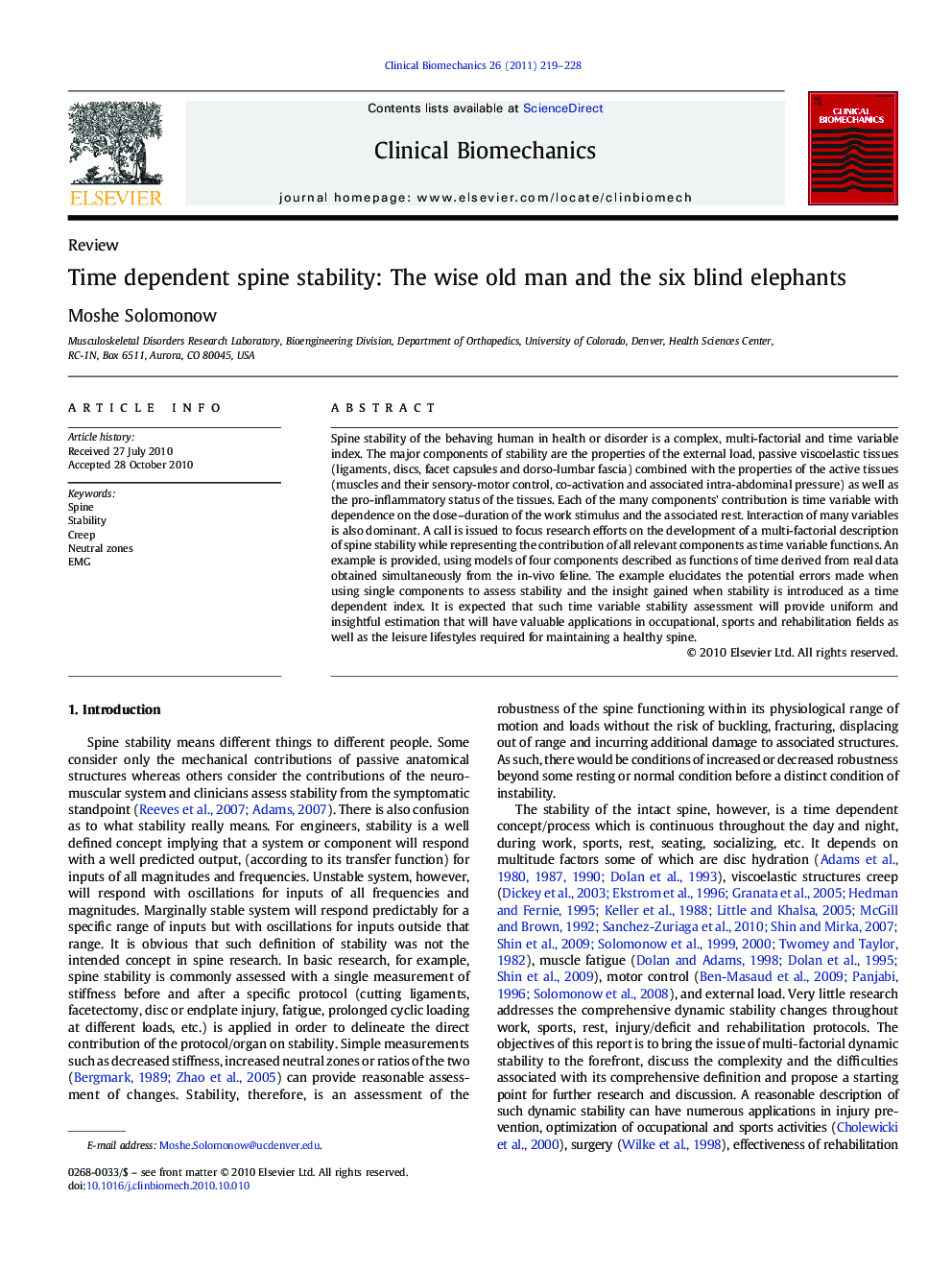| Article ID | Journal | Published Year | Pages | File Type |
|---|---|---|---|---|
| 4050915 | Clinical Biomechanics | 2011 | 10 Pages |
Spine stability of the behaving human in health or disorder is a complex, multi-factorial and time variable index. The major components of stability are the properties of the external load, passive viscoelastic tissues (ligaments, discs, facet capsules and dorso-lumbar fascia) combined with the properties of the active tissues (muscles and their sensory-motor control, co-activation and associated intra-abdominal pressure) as well as the pro-inflammatory status of the tissues. Each of the many components' contribution is time variable with dependence on the dose–duration of the work stimulus and the associated rest. Interaction of many variables is also dominant. A call is issued to focus research efforts on the development of a multi-factorial description of spine stability while representing the contribution of all relevant components as time variable functions. An example is provided, using models of four components described as functions of time derived from real data obtained simultaneously from the in-vivo feline. The example elucidates the potential errors made when using single components to assess stability and the insight gained when stability is introduced as a time dependent index. It is expected that such time variable stability assessment will provide uniform and insightful estimation that will have valuable applications in occupational, sports and rehabilitation fields as well as the leisure lifestyles required for maintaining a healthy spine.
